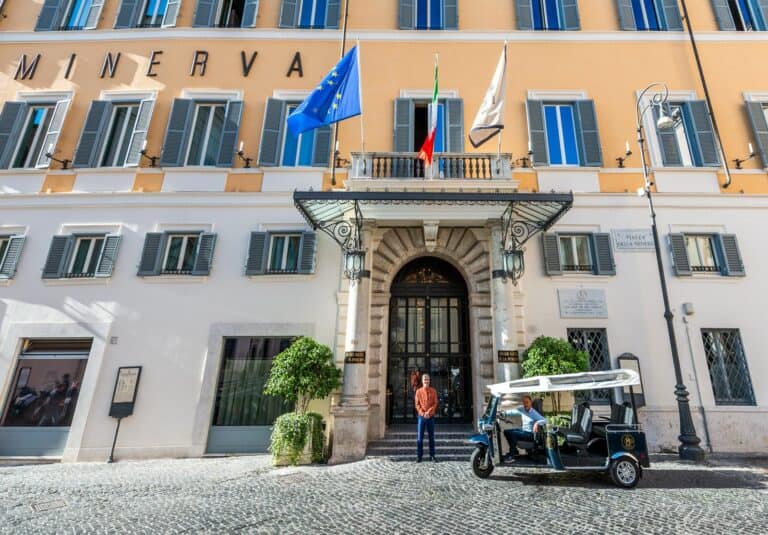Rome is more than a city; it’s a living museum, a sprawling epic of history, art, and culture. While other destinations boast singular landmarks like the Eiffel Tower or distant wonders such as Machu Picchu, Rome’s identity is a tapestry woven from millennia of influence. While the grandeur of the Colosseum or the sacred hush of the Vatican command attention, the true soul of the Eternal City is best discovered at the dinner table. This guide offers a deep dive into exploring Rome’s traditional cuisine and culinary heritage.
To visit Rome without fully embracing its culinary traditions is to see a masterpiece in black and white. The Roman food of this city, much like its people, is bold, direct, and deeply rooted in history. It speaks of resourcefulness, a reverence for ingredients, and a passion for flavors that have been perfected over generations.
This guide is your passport to the authentic tastes of Rome. It will steer you past the tourist traps and into the heart of a food culture that is as timeless as the Rome Forum itself. Prepare to explore dishes born from ingenuity, perfected in humble kitchens, and served with a fierce sense of pride.
The Ultimate Guide to Traditional Roman Foods: Your Must-Try List in Rome
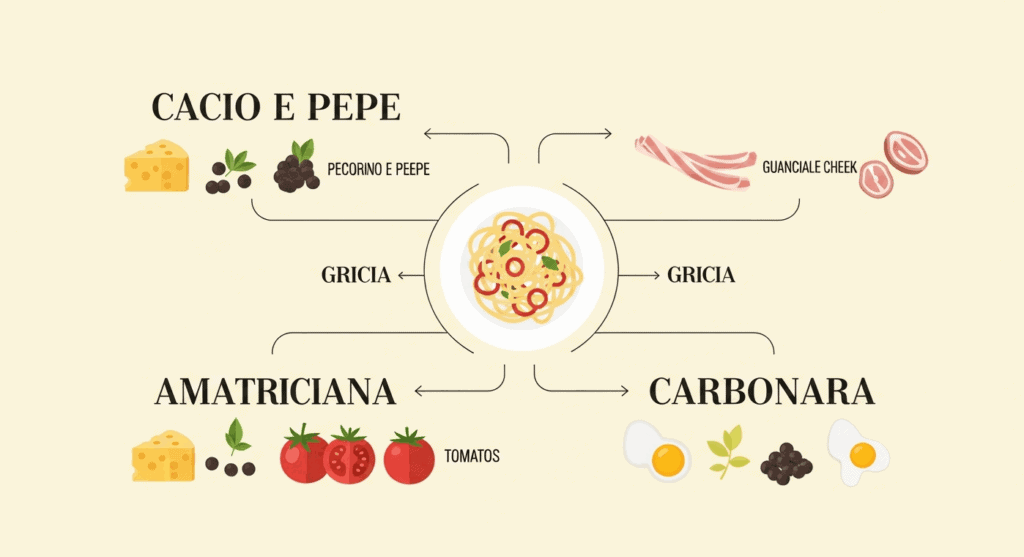
Welcome to Rome: A Food Lover’s Paradise
From the bustling trattorias of Trastevere to the historic market in Testaccio, Rome offers a culinary journey for every palate. The experience is about more than just sustenance; it’s a central part of the city’s social fabric. Italians are renowned for their profound respect for food, and in Rome, this philosophy is palpable. Meals are unhurried rituals, moments to connect and celebrate the simple, profound joy of eating well. You might grab a quick slice of pizza al taglio after visiting the Pantheon. Or you might enjoy a multi-course meal near Piazza Navona. Either way, you join a tradition that defines this amazing city.
The Philosophy of Roman Cuisine: Cucina Povera
The bedrock of traditional Roman food is a concept known as cucina povera, or “peasant cooking.” This isn’t about poverty in a negative sense, but rather a celebration of making extraordinary food from simple, humble, and accessible ingredients. It’s a philosophy of resourcefulness and seasonality, where nothing goes to waste. The most famous Roman dishes use a few high-quality ingredients. These include cured pork cheek (guanciale), Pecorino Romano cheese, seasonal vegetables like artichokes, and offal called the quinto quarto or “fifth quarter.” This method makes dishes that have strong flavors. They are very satisfying and honest in taste.
The Quintet of Roman Pasta: A Non-Negotiable Experience
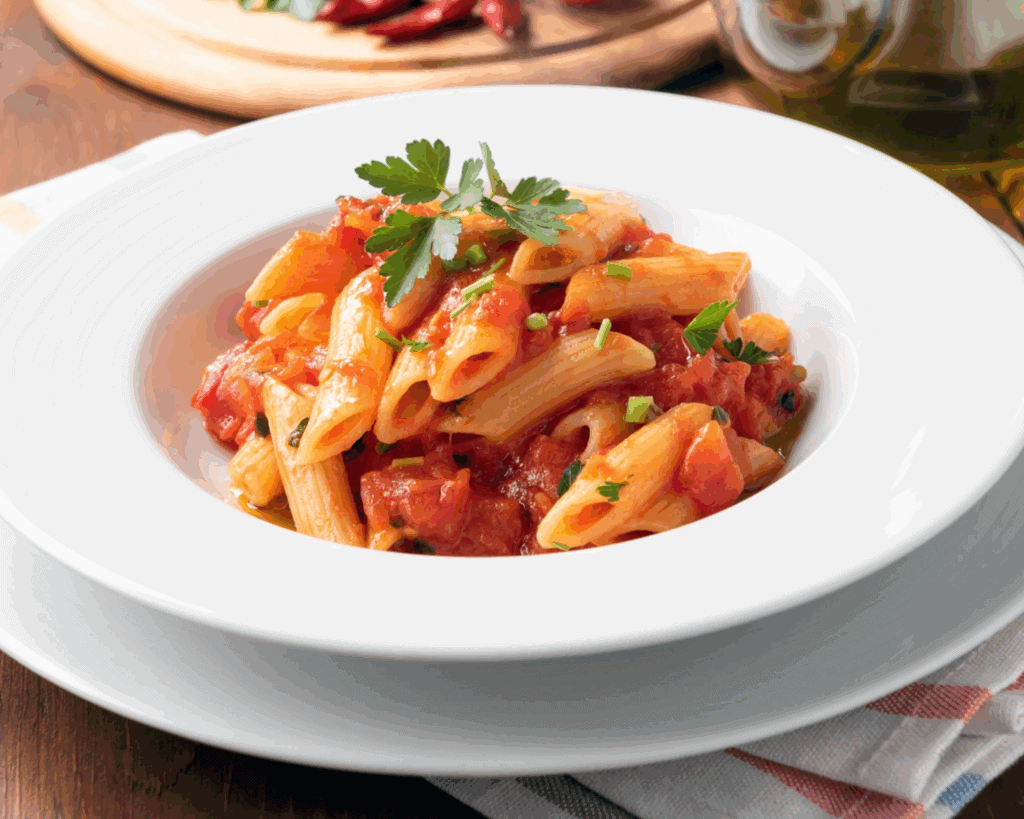
The family tree of Roman pasta. This diagram shows how the four iconic dishes—Cacio e Pepe, Gricia, Amatriciana, and Carbonara—are related, sharing a core set of simple, high-quality ingredients.
Pasta is the heart of Roman dining, and a specific group of iconic pasta dishes forms its sacred core. Understanding these is fundamental to eating like a local. They share a common ancestry and often use the same core ingredients—guanciale, Pecorino Romano, pepper, eggs, and tomatoes—in different combinations, yet each offers a uniquely profound flavor experience.
Carbonara: The Creamy Conundrum (No Cream!)
Let’s be clear: authentic Spaghetti alla Carbonara contains absolutely no cream. Its smooth, rich texture comes from mixing raw egg yolks, finely grated Pecorino Romano, a lot of freshly cracked black pepper, and the fat from crispy, pan-fried guanciale. The heat from the freshly cooked pasta gently cooks the egg yolk, creating a glossy sauce that clings to every strand. It is rich, peppery, and intensely savory—a true test of a Roman kitchen’s skill and a must-try dish for any visitor. To eat a well-made carbonara is to understand the genius of Roman simplicity.
Cacio e Pepe: Elegant Simplicity
Cacio e Pepe translates to “cheese and pepper,” and the dish is a testament to the magic of technique. It has only three ingredients. These are pasta (usually tonnarelli or spaghetti), Pecorino Romano, and black pepper. The secret lies in creating a perfect, silky sauce by emulsifying the starchy pasta water with the finely grated cheese. When executed properly, it is a deceptively simple masterpiece—creamy, pungent from the cheese, and sharp from the pepper. Its minimalism is its strength, showcasing the high quality of the ingredients without any distractions. This is the ultimate comfort food and a pillar of Roman cuisine.
Amatriciana: A Rich Tomato and Guanciale Symphony
Originating from the nearby town of Amatrice but long adopted by Rome, Bucatini all’Amatriciana is a robust and savory classic. The sauce is built on a foundation of crispy guanciale, the fat of which is used to sauté onions. San Marzano tomatoes are then added and simmered down into a rich, flavorful sauce, often with a hint of chili and finished with a generous sprinkle of Pecorino. It is a hearty, complex, and deeply satisfying dish that offers a beautiful balance of savory pork, sweet tomato, and salty cheese.
Gricia: The Ancestor of Amatriciana
Pasta alla Gricia is often called “Amatriciana in bianco” or white Amatriciana. It is basically an Amatriciana without tomatoes. Believed to be the precursor to its more famous cousin, the dish highlights the holy trinity of Roman pastoral cooking: guanciale, Pecorino Romano, and black pepper. The rendered fat from the pork cheek coats the pasta, creating a simple yet intensely flavorful sauce bound together with a little pasta water and a generous helping of cheese. It’s a powerful, pork-forward dish that showcases the pure essence of its core ingredients.
Ready to taste the real Rome? Book your golf cart food tour today and experience authentic dishes, local stories, and unforgettable bites!
Antipasti & Street Food: Opening Acts for Your Roman Feast
Before the pasta arrives, Romans indulge in a variety of starters (antipasti) and street foods that are integral to the dining experience. These bites are perfect for whetting the appetite or for a quick meal on the go while exploring the city’s countless wonders.
Supplì: Rome’s Irresistible Fried Rice Balls
Often called supplì al telefono because the melted mozzarella inside stretches like a telephone cord when pulled apart, these fried rice balls are Rome’s quintessential street food. A ball of risotto, typically cooked with a simple tomato and meat ragù, is stuffed with a piece of mozzarella, coated in breadcrumbs, and deep-fried until golden. The result is a crunchy exterior giving way to a soft, flavorful rice center with a molten cheese core. They are the perfect snack after a long day of walking between the Spanish Steps and the Trevi Fountain.
Carciofi: The Roman Artichoke Duo
When artichokes are in season (winter and early spring), they are ubiquitous in Rome, prepared in two distinct and delicious ways. Carciofi alla Romana involves trimming the local mammole variety and slowly braising them with garlic, parsley, and mint until they are fork-tender. The other style, Carciofi alla Giudia (“Jewish-style”), is a masterpiece from the city’s historic Jewish Ghetto. The artichoke is pressed open to resemble a flower and deep-fried until the outer leaves are shatteringly crisp and the heart is creamy and tender. Trying both is essential.
Assortimenti di Antipasti: A Platter of Roman Delights
Many trattorias offer an antipasto della casa (house antipasto), a platter showcasing a variety of small bites. This is a fantastic way to sample multiple local flavors. You can find items like cured meats such as prosciutto and salami. There are cheeses like pecorino and mozzarella. You might also see bruschetta with different toppings, marinated vegetables, and sometimes beans or olives. It’s a convivial way to start a meal and experience the breadth of regional products.
Puntarelle: The Zesty Roman Salad
A truly unique Roman specialty, puntarelle is a salad made from the inner shoots of a specific variety of chicory. The crisp, slightly bitter greens are thinly sliced into curls by soaking them in ice water and are traditionally dressed with a powerful vinaigrette of anchovy, garlic, vinegar, and olive oil. The result is a refreshing, crunchy, and pungent salad that cuts through the richness of other Roman dishes, acting as a perfect palate cleanser.
Secondi Piatti: Hearty Roman Main Courses
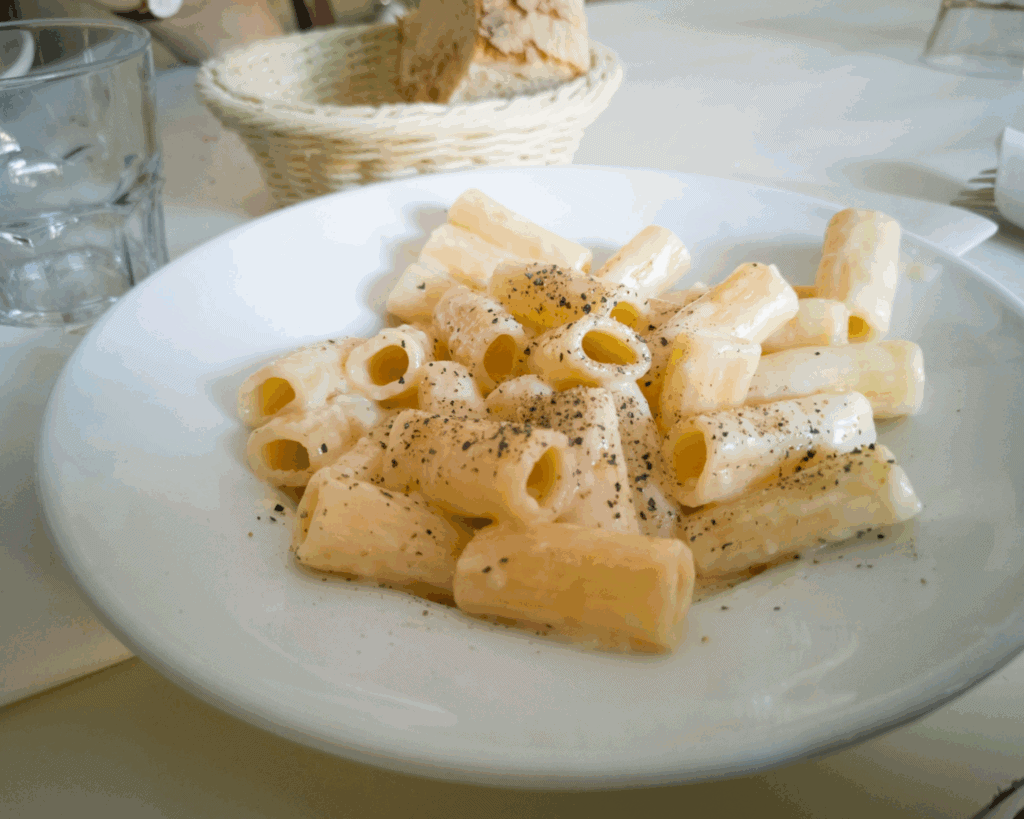
While pasta often steals the show, the secondi (main courses) are where the principles of cucina povera and the quinto quarto truly shine. These dishes are hearty, rustic, and full of Roman history.
Saltimbocca alla Romana: “Jumps in the Mouth” Veal
The name of this dish translates to “jumps in the mouth,” a fitting description for its irresistible flavor. It consists of thin escalopes of veal topped with a slice of salty prosciutto and a fresh sage leaf, all pinned together with a toothpick. The combination is quickly pan-fried in butter and white wine. It’s a simple, elegant, and incredibly savory dish that comes together in minutes but delivers a complex and memorable taste.
Coda alla Vaccinara: Oxtail Stew (Cucina Povera Classic)
This is the king of Roman stews and a classic quinto quarto dish. Oxtail is slow-braised for hours in a rich tomato and wine sauce with a soffritto of celery, onions, and carrots. The long cooking time renders the meat incredibly tender, falling off the bone into a thick, deeply flavorful stew. Sometimes, unexpected ingredients like raisins or even bitter cocoa are added to provide depth. The historic neighborhood of Monte Testaccio, once the center of the city’s slaughterhouses, is famous for perfecting this dish.
Trippa alla Romana: A Testament to Roman Resourcefulness
Another cornerstone of the quinto quarto tradition, Trippa alla Romana transforms humble tripe into a culinary delight. The tripe is simmered in a zesty tomato sauce infused with wild mint (mentuccia) and finished with a generous dusting of Pecorino Romano cheese. The mint provides a fresh, aromatic counterpoint to the richness of the tripe and tomato. It’s a bold dish that represents the no-waste philosophy of Roman cooking at its most delicious.
Contorni (Sides): The Perfect Companions
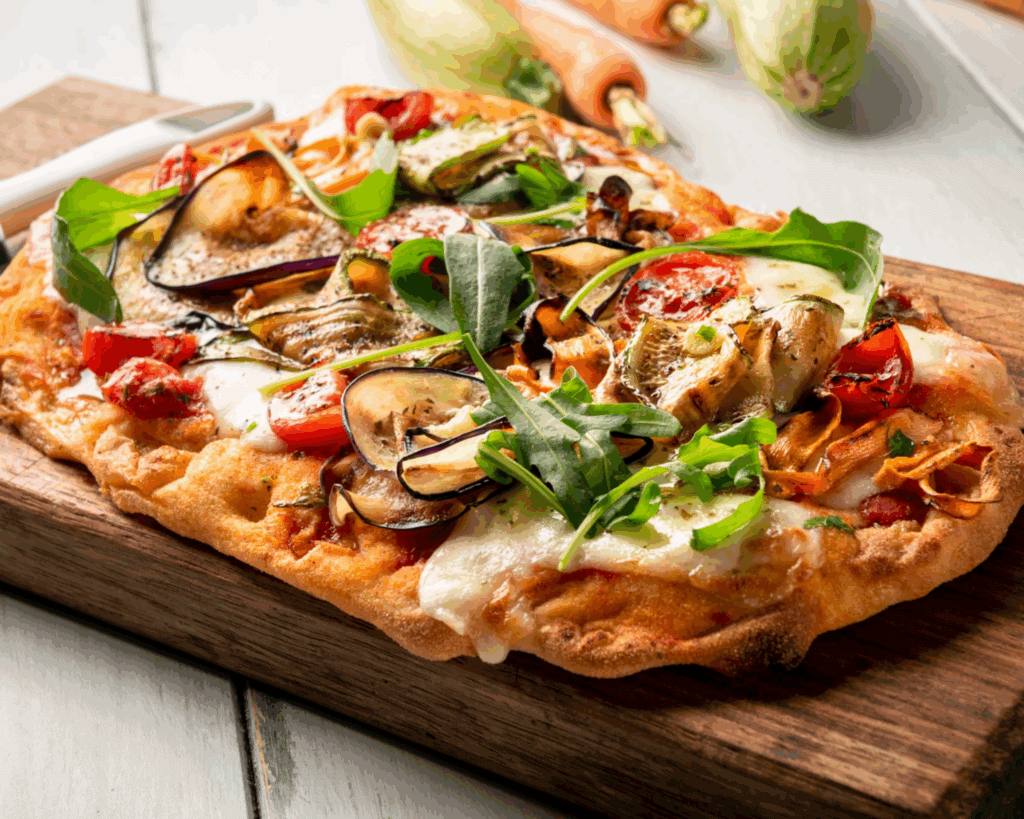
Roman main courses are typically served unadorned, making the choice of contorni, or side dishes, an important part of the meal that allows vegetables to take center stage.
Cicoria Ripassata: Sautéed Chicory
A classic Roman side, cicoria ripassata features wild chicory that is first boiled to tame its bitterness and then sautéed in a pan with olive oil, garlic, and a pinch of peperoncino (chili flakes). The process results in a tender, flavorful green with a slight garlicky kick. It’s the perfect, robust accompaniment to roasted meats or rich stews.
Patate al Forno: Perfectly Roasted Potatoes
Simple yet sublime, Roman-style roasted potatoes are a staple side dish. Chunks of potato are mixed with olive oil, salt, pepper, and lots of fresh rosemary. Then, they are roasted until golden brown and crispy outside. Inside, they stay fluffy and tender. They are the ultimate comfort food and pair beautifully with nearly any main course.
Roman-Style Pizza: A Distinctive Crust
While Naples is the celebrated birthplace of pizza, Rome has its own distinct and delicious styles that are not to be missed. The Roman-style pizza is a source of local pride and a must-try for any visitor.
Pizza al Taglio: By the Slice, On the Go
Pizza al taglio, or pizza by the slice, is a beloved Roman institution. It’s baked in large rectangular trays and sold by weight (al peso). The crust is typically thicker and lighter than a traditional round pizza, with a crispy base and an airy interior. Toppings range from the simple pizza bianca (olive oil and salt) to elaborate seasonal combinations. It’s the ideal fast, cheap, and delicious lunch while navigating the city. Utilizing a travel card like the Roma Pass can make zipping between sightseeing and these essential pizza spots a breeze.
Thin-Crust Roman Pizza: The Traditional Round Pie
When Romans sit down for a pizza, they opt for pizza tonda. The Roman style is characterized by its paper-thin, crispy, almost cracker-like crust, achieved by adding olive oil to the dough and rolling it out thinly. This creates a light, digestible base that provides a satisfying crunch with every bite. The edges, or cornicione, are minimally raised, allowing the toppings to shine. It is a completely different, yet equally valid, pizza experience from its chewy Neapolitan cousin.
Dolci & Gelato: Sweet Endings in the Eternal City

No Roman meal is complete without dolce, or something sweet. From creamy gelato to traditional pastries, the city offers plenty of ways to indulge your sweet tooth.
Gelato: The Art of Italian Ice Cream
Roman gelato is a serious craft. True artisanal gelato uses fresh, high-quality ingredients. This makes dense, strongly flavored gelato. It has less air and fat than American-style ice cream. Look for gelaterias that store their product in covered metal containers (pozzetti) and where the colors look natural, not neon. A scoop of pistachio or hazelnut is the perfect restorative treat after a day exploring.
Maritozzi con la Panna: A Roman Breakfast Delight
A classic Roman breakfast pastry, the maritozzo is a soft, sweet brioche-style bun, often enriched with raisins or pine nuts, that is split open and generously filled with freshly whipped cream (panna). It’s a decadent, cloud-like confection that is both light and indulgent, best enjoyed with a morning cappuccino for a true local start to the day.
Crostata di Ricotta e Visciole: Cherry Ricotta Tart
This traditional tart comes from the Jewish Ghetto and is a beloved Roman dessert. It features a sweet pastry crust (pasta frolla) filled with creamy, sweetened ricotta cheese and a layer of sour cherries (visciole) or sour cherry jam. The combination of the rich, smooth ricotta and the tartness of the cherries is a match made in heaven.
Cannoli: Sicilian Delicacy, Roman Favorite
While cannoli are famously Sicilian, they have been wholeheartedly adopted by Romans. These crisp, tube-shaped pastry shells are fried and then filled to order with a sweet, creamy ricotta filling, often studded with chocolate chips or candied fruit and dusted with powdered sugar. When fresh, the contrast between the crunchy shell and the luscious filling is simply divine.
The Roman Way of Eating: Insider Tips & Etiquette
To truly dine like a Roman, keep a few things in mind. Lunch is typically served from 1 PM to 3 PM, and dinner rarely starts before 8 PM. Tipping is not obligatory, but rounding up the bill is appreciated. Embrace the pace; meals are meant to be savored. Don’t be afraid to venture off the main squares near landmarks like Largo Argentina or the Circus Maximus; the best food is often in humble trattorias on quiet side streets. This remains true even during a busy Jubilee Year, when the city’s authentic culinary soul provides a delicious refuge. Places like Osteria dell’Ingegno or Ristorante Apuleius on the Viale Aventino offer authentic experiences, as do many establishments near central Rome Hotels.
Conclusion
The culinary landscape of Rome is as rich and layered as its history. Foundational pastas like carbonara and cacio e pepe connect us to the past. Unique artichoke dishes and hearty quinto quarto stews from Testaccio also do this. Every dish offers a link to history. To explore Rome is to explore its food. So, as you wander its ancient streets, from the shadow of the Colosseum to the steps of a local trattoria, be sure to eat with curiosity and passion. By embracing the principles of cucina povera and savoring these must-try dishes, you will not only satisfy your hunger—you will taste the very essence of the Eternal City.




